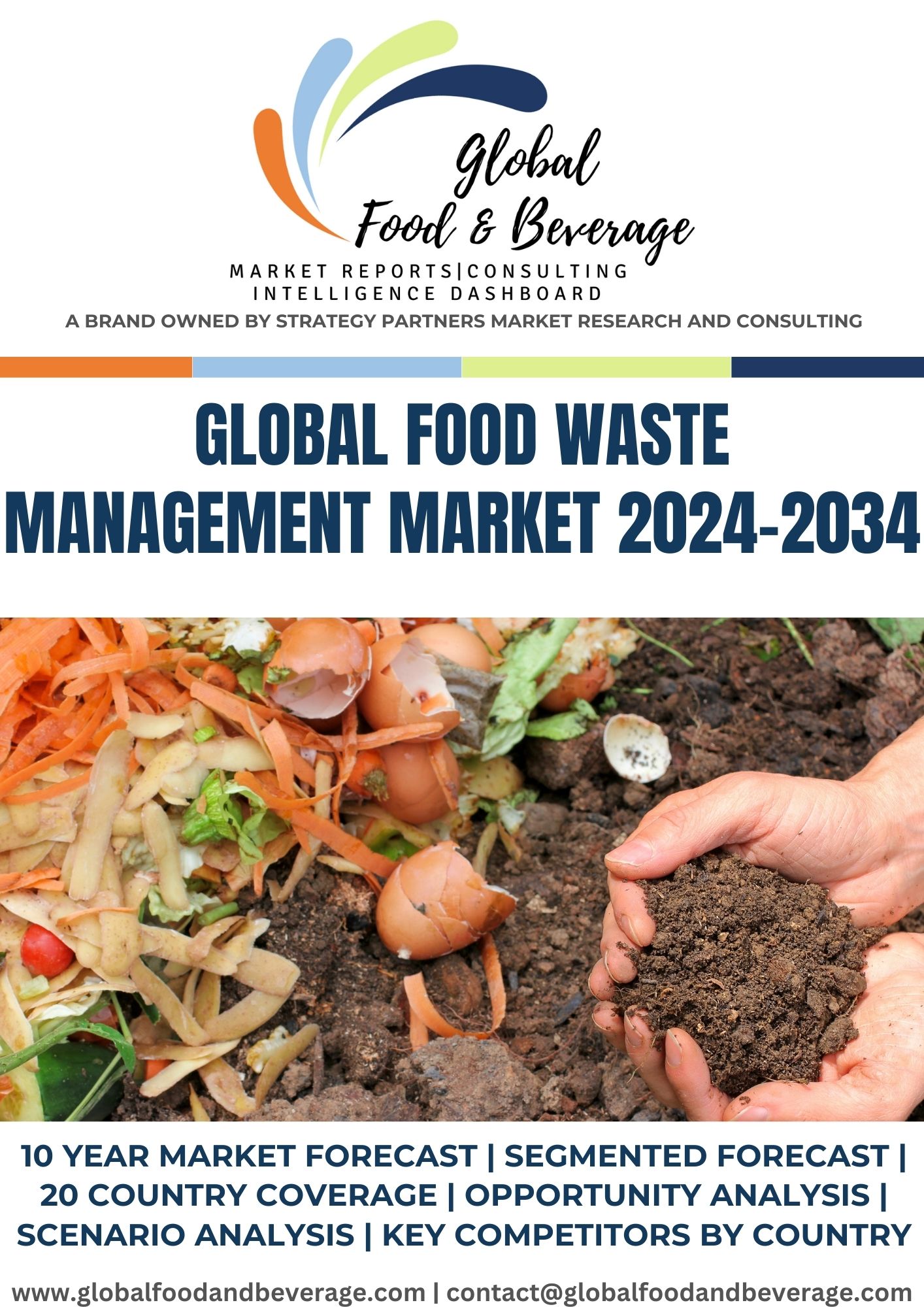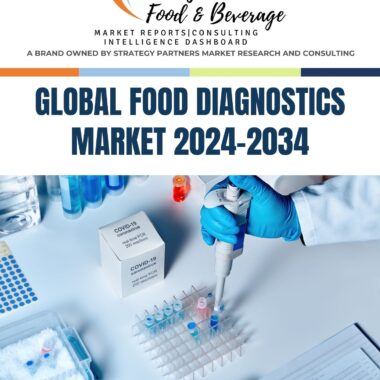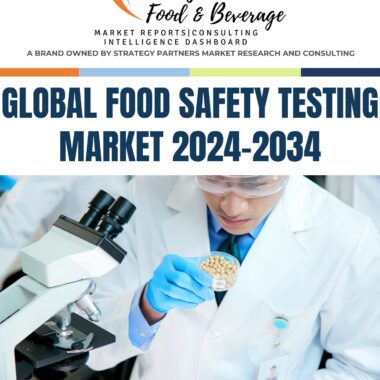Description
The market growth is attributed to the increasing awareness about the environmental and economic impacts of food waste, as well as the growing demand for sustainable food waste management solutions.
Food waste is a major global problem, with one-third of all food produced for human consumption being wasted each year. This wasted food has a significant environmental impact, contributing to greenhouse gas emissions, water pollution, and land degradation. It also has a significant economic impact, costing the global economy an estimated USD 1 trillion annually.
Food waste can occur at any stage of the food supply chain, from production to consumption. However, the largest proportion of food waste occurs at the consumer level, where households and businesses account for around 60% of all food waste.
There are a number of different food waste management technologies and solutions available, including:
Prevention: This involves reducing the amount of food waste that is generated in the first place. This can be done through measures such as better planning and forecasting, improved food handling and storage practices, and consumer education.
Recovery: This involves recovering edible food from the waste stream and redistributing it to those in need. This can be done through food donation programs, food banks, and community kitchens.
Recycling: This involves converting inedible food waste into other products, such as compost, animal feed, or bioenergy.
Disposal: This involves disposing of food waste in a safe and environmentally friendly manner. This can be done through landfilling, incineration, or anaerobic digestion.
The global food waste management market is segmented by technology, application, and region. By technology, the market is segmented into prevention, recovery, recycling, and disposal. By application, the market is segmented into households, food service, and agriculture. By region, the market is segmented into North America, Europe, Asia Pacific, Latin America, and the Middle East & Africa.
The North American region is expected to account for the largest share of the global food waste management market in 2023. This is due to the high level of awareness about the environmental and economic impacts of food waste in the region, as well as the growing demand for sustainable food waste management solutions.
The Asia Pacific region is expected to grow at the fastest CAGR during the forecast period. This growth is attributed to the increasing urbanization and rising disposable incomes in the region, which are leading to a growing demand for processed foods and convenience foods. This is also leading to an increase in food waste generation.
Lack of awareness about the environmental and economic impacts of food waste.
Lack of infrastructure for food waste management.
High costs of food waste management technologies.
Regulatory challenges.
Despite these challenges, the global food waste management market is expected to grow significantly in the coming years. This is due to the increasing awareness about the environmental and economic impacts of food waste, as well as the growing demand for sustainable food waste management solutions.
Here are some of the key trends that are expected to drive the growth of the global food waste management market in the coming years:
Growing demand for sustainable food waste management solutions: Governments and businesses are increasingly focused on adopting sustainable practices, and food waste management is a key area of focus. This is leading to a growing demand for sustainable food waste management solutions, such as composting and anaerobic digestion.
Increasing urbanization: Urbanization is leading to a growing demand for processed foods and convenience foods. This is also leading to an increase in food waste generation. However, urbanization is also creating new opportunities for food waste management companies. For example, companies are developing new technologies to collect and transport food waste more efficiently in urban areas.
Technological advancements: There are a number of technological advancements that are taking place in the food waste management market. For example, companies are developing new sensors to monitor food quality and reduce food waste. Companies are also developing new recycling technologies to convert food waste into other products, such as compost and animal feed.
Table of Content
1 Market Introduction- Global Food Waste Management Market
1.1 Market Segmentation- Global Food Waste Management Market
1.2 Key Trends- Global Food Waste Management Market
1.2.1 Drivers
1.2.2 Restraints
1.2.3 Challenges
2 Global Market Forecast- Global Food Waste Management Market
2.1.1 By Region
2.1.2 By Method
2.1.3 By End Users
3 Country Wise Forecast- Global Food Waste Management Market
3.1 US
3.1.1 Key Trends
3.1.2 Consumer Spending
o Population
o GDP
o CPI
o Spend per Capita
o Spend as a proportion of GDP
3.1.3 Market Forecast- US Food Waste Management Market
o By Method
o By End Users
3.1.4 Key Competitors- US Food Waste Management Market
3.1.5 EXIM
3.1.6 Patents
3.1.7 Scenario Analysis- US Food Waste Management Market
3.1.8 Opportunity Analysis- US Food Waste Management Market
3.2 Canada
3.2.1 Key Trends
3.2.2 Consumer Spending
o Population
o GDP
o CPI
o Spend per Capita
o Spend as a proportion of GDP
3.2.3 Market Forecast- Canada Food Waste Management Market
o By Method
o By End Users
3.2.4 Key Competitors- Canada Food Waste Management Market
3.2.5 EXIM
3.2.6 Patents
3.2.7 Scenario Analysis- Canada Food Waste Management Market
3.2.8 Opportunity Analysis- Canada Food Waste Management Market
3.3 UK
3.3.1 Key Trends
3.3.2 Consumer Spending
o Population
o GDP
o CPI
o Spend per Capita
o Spend as a proportion of GDP
3.3.3 Market Forecast- UK Food Waste Management Market
o By Method
o By End Users
3.3.4 Key Competitors- UK Food Waste Management Market
3.3.5 EXIM
3.3.6 Patents
3.3.7 Scenario Analysis- UK Food Waste Management Market
3.3.8 Opportunity Analysis- UK Food Waste Management Market
3.4 Germany
3.4.1 Key Trends
3.4.2 Consumer Spending
o Population
o GDP
o CPI
o Spend per Capita
o Spend as a proportion of GDP
3.4.3 Market Forecast- Germany Food Waste Management Market
o By Method
o By End Users
3.4.4 Key Competitors- Germany Food Waste Management Market
3.4.5 EXIM
3.4.6 Patents
3.4.7 Scenario Analysis- Germany Food Waste Management Market
3.4.8 Opportunity Analysis- Germany Food Waste Management Market
3.5 France
3.5.1 Key Trends
3.5.2 Consumer Spending
o Population
o GDP
o CPI
o Spend per Capita
o Spend as a proportion of GDP
3.5.3 Market Forecast- France Food Waste Management Market
o By Method
o By End Users
3.5.4 Key Competitors- France Food Waste Management Market
3.5.5 EXIM
3.5.6 Patents
3.5.7 Scenario Analysis- France Food Waste Management Market
3.5.8 Opportunity Analysis- France Food Waste Management Market
3.6 Italy
3.6.1 Key Trends
3.6.2 Consumer Spending
o Population
o GDP
o CPI
o Spend per Capita
o Spend as a proportion of GDP
3.6.3 Market Forecast- Italy Food Waste Management Market
o By Method
o By End Users
3.6.4 Key Competitors- Italy Food Waste Management Market
3.6.5 EXIM
3.6.6 Patents
3.6.7 Scenario Analysis- Italy Food Waste Management Market
3.6.8 Opportunity Analysis- Italy Food Waste Management Market
3.7 Ireland
3.7.1 Key Trends
3.7.2 Consumer Spending
o Population
o GDP
o CPI
o Spend per Capita
o Spend as a proportion of GDP
3.7.3 Market Forecast- Ireland Food Waste Management Market
o By Method
o By End Users
3.7.4 Key Competitors- Ireland Food Waste Management Market
3.7.5 EXIM
3.7.6 Patents
3.7.7 Scenario Analysis- Ireland Food Waste Management Market
3.7.8 Opportunity Analysis- Ireland Food Waste Management Market
3.8 Spain
3.8.1 Key Trends
3.8.2 Consumer Spending
o Population
o GDP
o CPI
o Spend per Capita
o Spend as a proportion of GDP
3.8.3 Market Forecast- Spain Food Waste Management Market
o By Method
o By End Users
3.8.4 Key Competitors- Spain Food Waste Management Market
3.8.5 EXIM
3.8.6 Patents
3.8.7 Scenario Analysis- Spain Food Waste Management Market
3.8.8 Opportunity Analysis- Spain Food Waste Management Market
3.9 Belgium
3.9.1 Key Trends
3.9.2 Consumer Spending
o Population
o GDP
o CPI
o Spend per Capita
o Spend as a proportion of GDP
3.9.3 Market Forecast- Belgium Food Waste Management Market
o By Method
o By End Users
3.9.4 Key Competitors- Belgium Food Waste Management Market
3.9.5 EXIM
3.9.6 Patents
3.9.7 Scenario Analysis- Belgium Food Waste Management Market
3.9.8 Opportunity Analysis- Belgium Food Waste Management Market
3.10 Switzerland
3.10.1 Key Trends
3.10.2 Consumer Spending
o Population
o GDP
o CPI
o Spend per Capita
o Spend as a proportion of GDP
3.10.3 Market Forecast- Switzerland Food Waste Management Market
o By Method
o By End Users
3.10.4 Key Competitors- Switzerland Food Waste Management Market
3.10.5 EXIM
3.10.6 Patents
3.10.7 Scenario Analysis- Switzerland Food Waste Management Market
3.10.8 Opportunity Analysis- Switzerland Food Waste Management Market
3.11 Sweden
3.11.1 Key Trends
3.11.2 Consumer Spending
o Population
o GDP
o CPI
o Spend per Capita
o Spend as a proportion of GDP
3.11.3 Market Forecast- Sweden Food Waste Management Market
o By Method
o By End Users
3.11.4 Key Competitors- Sweden Food Waste Management Market
3.11.5 EXIM
3.11.6 Patents
3.11.7 Scenario Analysis- Sweden Food Waste Management Market
3.11.8 Opportunity Analysis- Sweden Food Waste Management Market
3.12 Portugal
3.12.1 Key Trends
3.12.2 Consumer Spending
o Population
o GDP
o CPI
o Spend per Capita
o Spend as a proportion of GDP
3.12.3 Market Forecast- Portugal Food Waste Management Market
o By Method
o By End Users
3.12.4 Key Competitors- Portugal Food Waste Management Market
3.12.5 EXIM
3.12.6 Patents
3.12.7 Scenario Analysis- Portugal Food Waste Management Market
3.12.8 Opportunity Analysis- Portugal Food Waste Management Market
3.13 The Netherlands
3.13.1 Key Trends
3.13.2 Consumer Spending
o Population
o GDP
o CPI
o Spend per Capita
o Spend as a proportion of GDP
3.13.3 Market Forecast- Netherlands Food Waste Management Market
o By Method
o By End Users
3.13.4 Key Competitors- Netherlands Food Waste Management Market
3.13.5 EXIM
3.13.6 Patents
3.13.7 Scenario Analysis- Netherlands Food Waste Management Market
3.13.8 Opportunity Analysis- Netherlands Food Waste Management Market
3.14 Brazil
3.14.1 Key Trends
3.14.2 Consumer Spending
o Population
o GDP
o CPI
o Spend per Capita
o Spend as a proportion of GDP
3.14.3 Market Forecast- Brazil Food Waste Management Market
o By Method
o By End Users
3.14.4 Key Competitors- Brazil Food Waste Management Market
3.14.5 EXIM
3.14.6 Patents
3.14.7 Scenario Analysis- Brazil Food Waste Management Market
3.14.8 Opportunity Analysis- Brazil Food Waste Management Market
3.15 Mexico
3.15.1 Key Trends
3.15.2 Consumer Spending
o Population
o GDP
o CPI
o Spend per Capita
o Spend as a proportion of GDP
3.15.3 Market Forecast- Mexico Food Waste Management Market
o By Method
o By End Users
3.15.4 Key Competitors- Mexico Food Waste Management Market
3.15.5 EXIM
3.15.6 Patents
3.15.7 Scenario Analysis- Mexico Food Waste Management Market
3.15.8 Opportunity Analysis- Mexico Food Waste Management Market
3.16 Australia
3.16.1 Key Trends
3.16.2 Consumer Spending
o Population
o GDP
o CPI
o Spend per Capita
o Spend as a proportion of GDP
3.16.3 Market Forecast- Australia Food Waste Management Market
o By Method
o By End Users
3.16.4 Key Competitors- Australia Food Waste Management Market
3.16.5 EXIM
3.16.6 Patents
3.16.7 Scenario Analysis- Australia Food Waste Management Market
3.16.8 Opportunity Analysis- Australia Food Waste Management Market
3.17 China
3.17.1 Key Trends
3.17.2 Consumer Spending
o Population
o GDP
o CPI
o Spend per Capita
o Spend as a proportion of GDP
3.17.3 Market Forecast- China Food Waste Management Market
o By Method
o By End Users
3.17.4 Key Competitors- China Food Waste Management Market
3.17.5 EXIM
3.17.6 Patents
3.17.7 Scenario Analysis- China Food Waste Management Market
3.17.8 Opportunity Analysis- China Food Waste Management Market
3.18 Indonesia
3.18.1 Key Trends
3.18.2 Consumer Spending
o Population
o GDP
o CPI
o Spend per Capita
o Spend as a proportion of GDP
3.18.3 Market Forecast- Indonesia Food Waste Management Market
o By Method
o By End Users
3.18.4 Key Competitors- Indonesia Food Waste Management Market
3.18.5 EXIM
3.18.6 Patents
3.18.7 Scenario Analysis- Indonesia Food Waste Management Market
3.18.8 Opportunity Analysis- Indonesia Food Waste Management Market
3.19 India
3.19.1 Key Trends
3.19.2 Consumer Spending
o Population
o GDP
o CPI
o Spend per Capita
o Spend as a proportion of GDP
3.19.3 Market Forecast- India Food Waste Management Market
o By Method
o By End Users
3.19.4 Key Competitors- India Food Waste Management Market
3.19.5 EXIM
3.19.6 Patents
3.19.7 Scenario Analysis- India Food Waste Management Market
3.19.8 Opportunity Analysis- India Food Waste Management Market
3.20 Japan
3.20.1 Key Trends
3.20.2 Consumer Spending
o Population
o GDP
o CPI
o Spend per Capita
o Spend as a proportion of GDP
3.20.3 Market Forecast- Japan Food Waste Management Market
o By Method
o By End Users
3.20.4 Key Competitors- Japan Food Waste Management Market
3.20.5 EXIM
3.20.6 Patents
3.20.7 Scenario Analysis- Japan Food Waste Management Market
3.20.8 Opportunity Analysis- Japan Food Waste Management Market
3.21 South Korea
3.21.1 Key Trends
3.21.2 Consumer Spending
o Population
o GDP
o CPI
o Spend per Capita
o Spend as a proportion of GDP
3.21.3 Market Forecast- South Korea Food Waste Management Market
o By Method
o By End Users
3.21.4 Key Competitors- South Korea Food Waste Management Market
3.21.5 EXIM
3.21.6 Patents
3.21.7 Scenario Analysis- South Korea Food Waste Management Market
3.21.8 Opportunity Analysis- South Korea Food Waste Management Market
3.22 Thailand
3.22.1 Key Trends
3.22.2 Consumer Spending
o Population
o GDP
o CPI
o Spend per Capita
o Spend as a proportion of GDP
3.22.3 Market Forecast- Thailand Food Waste Management Market
o By Method
o By End Users
3.22.4 Key Competitors- Thailand Food Waste Management Market
3.22.5 EXIM
3.22.6 Patents
3.22.7 Scenario Analysis- Thailand Food Waste Management Market
3.22.8 Opportunity Analysis- Thailand Food Waste Management Market
3.23 Malaysia
3.23.1 Key Trends
3.23.2 Consumer Spending
o Population
o GDP
o CPI
o Spend per Capita
o Spend as a proportion of GDP
3.23.3 Market Forecast- Malaysia Food Waste Management Market
o By Method
o By End Users
3.23.4 Key Competitors- Malaysia Food Waste Management Market
3.23.5 EXIM
3.23.6 Patents
3.23.7 Scenario Analysis- Malaysia Food Waste Management Market
3.23.8 Opportunity Analysis- Malaysia Food Waste Management Market
3.24 Singapore
3.24.1 Key Trends
3.24.2 Consumer Spending
o Population
o GDP
o CPI
o Spend per Capita
o Spend as a proportion of GDP
3.24.3 Market Forecast- Singapore Food Waste Management Market
o By Method
o By End Users
3.24.4 Key Competitors- Singapore Food Waste Management Market
3.24.5 EXIM
3.24.6 Patents
3.24.7 Scenario Analysis- Singapore Food Waste Management Market
3.24.8 Opportunity Analysis- Singapore Food Waste Management Market
4 Opportunity Matrix- Global Food Waste Management Market
5 Conclusions and Recommendations- Global Food Waste Management Market
6 About Global Food & Beverage




